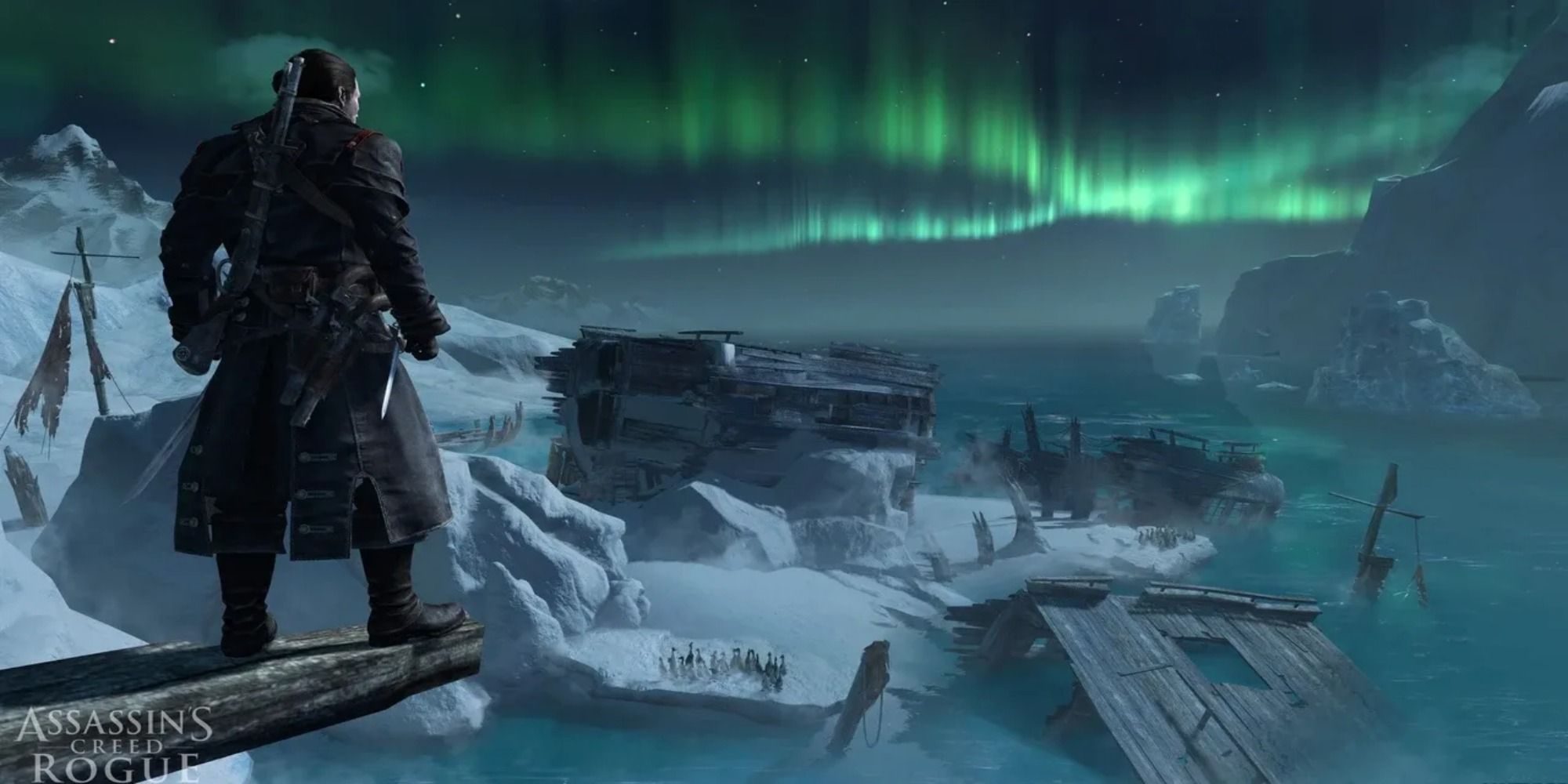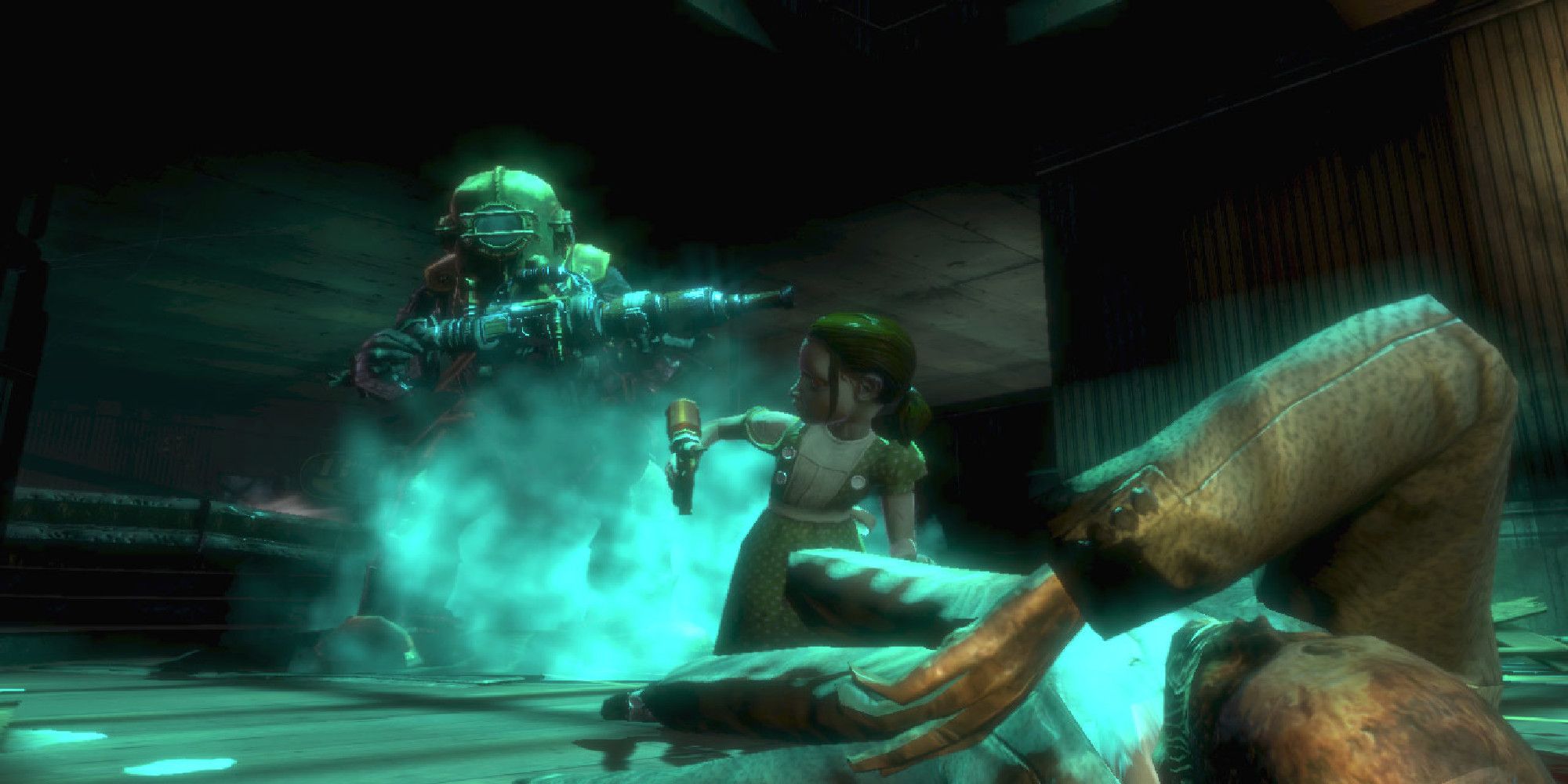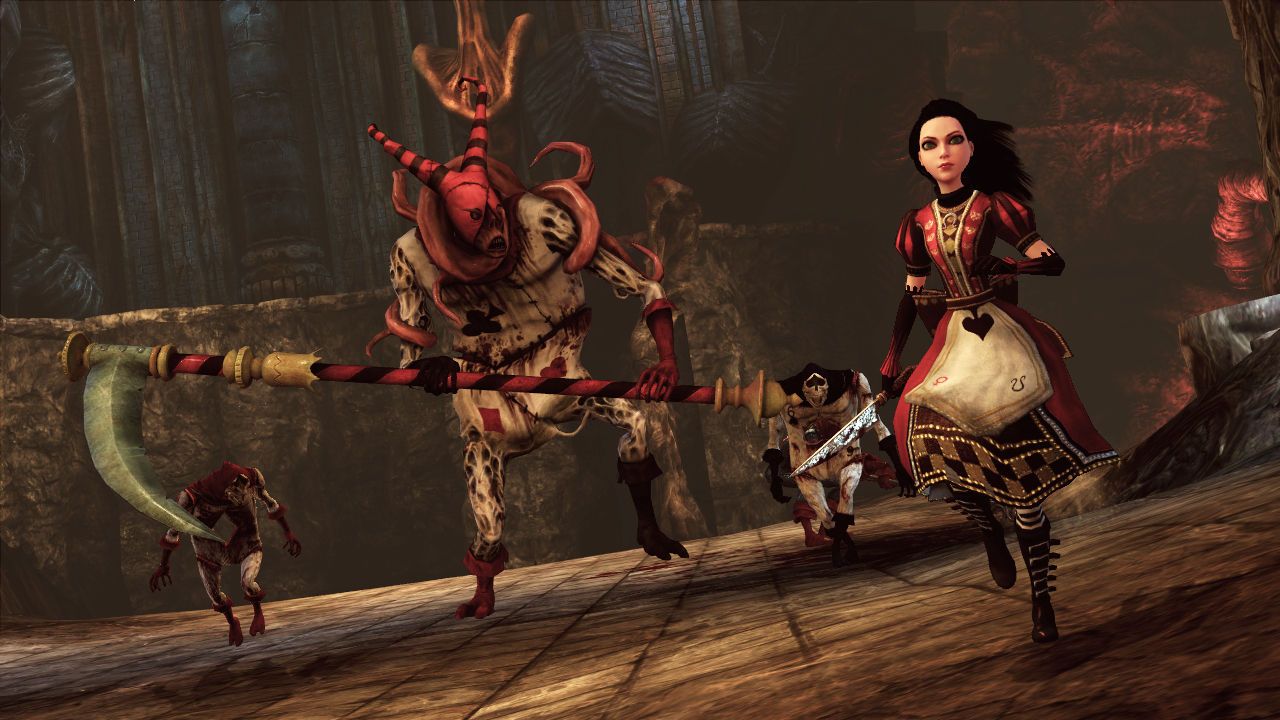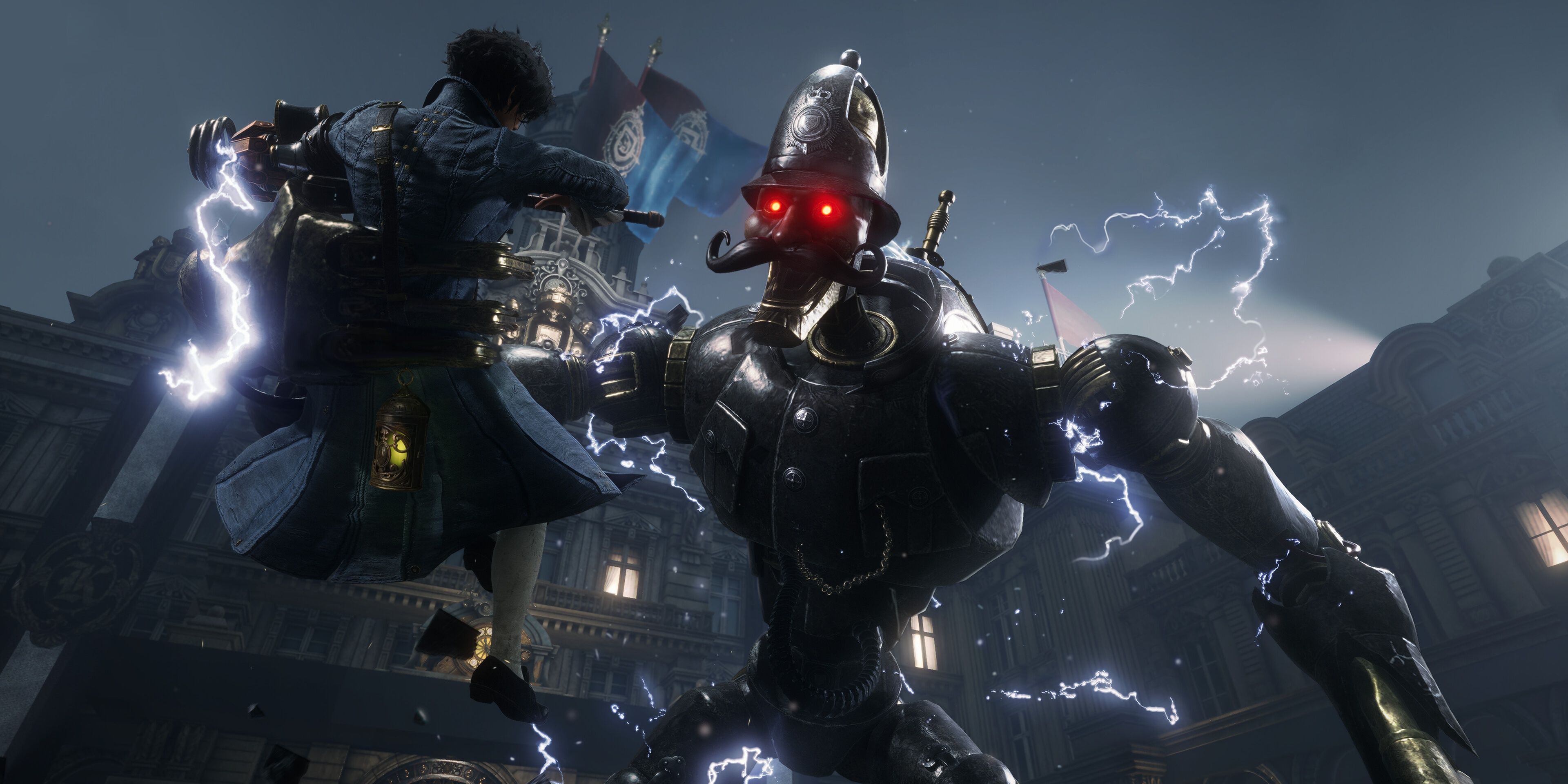
Guillermo del Toro is a highly acclaimed director known for his beautiful and often haunting fantasy films, including titles like Pan’s Labyrinth, The Shape of Water, and Crimson Peak.
Guillermo del Toro has recently become known for reimagining classic stories. His film The Shape of Water draws inspiration from the 1954 movie Creature from the Black Lagoon, and his 2022 film Pinocchio is based on the original The Adventures of Pinocchio from 1883.
The director’s newest movie, Frankenstein, follows a similar approach to his previous work, being a long-held passion project. It draws inspiration from Mary Shelley’s original 1818 novel, the iconic 1931 film, and its sequel, 1935’s Bride of Frankenstein.
Guillermo del Toro’s Frankenstein could be his masterpiece, and though there aren’t many video games directly based on the original novel or the classic Universal film, there are still several games that fans of the upcoming 2025 movie might appreciate, thanks to shared themes and qualities.
Spoilers for Guillermo del Toro’s Frankenstein ahead!
8. Assassin’s Creed Rogue
Sailing Through the Frozen Atlantic

Much of the 2025 film Frankenstein takes place near the North Pole. The crew of the Royal Danish Navy ship, the Horisont, is battling to break free from the ice and reach the pole when they unexpectedly discover the story of Victor Frankenstein and the creature pursuing him.
Few games share the same cold, northern setting, but Assassin’s Creed Rogue from 2014 immediately springs to mind. It frequently has players traveling the North Atlantic and Arctic, both on foot and by ship.
Though set around 100 years before the story of Frankenstein, Rogue follows Shay Cormac as he navigates the challenges of northern sea travel. However, unlike the hardships faced in Frankenstein, Shay has an easier time thanks to his ship, the Morrigan, which is equipped with an ice-breaking ram.
The Arctic setting in Frankenstein is strikingly bleak and immediately evokes a sense of coldness, much like how Rogue always affected me. Both films brilliantly capture both the perils and the beauty of venturing north by sea.
7. Devil May Cry
Monsters in Gothic Castles

Near the beginning of the movie, Victor Frankenstein acquires a large, imposing, castle-like tower to serve as his laboratory for creating the Creature. Seeing this tower instantly reminded me of the castle featured in the 2001 video game, Devil May Cry – they look remarkably alike.
Following the success of Resident Evil, Devil May Cry is one of Capcom’s most enduring and popular game series. While both games feature more action than the 2025 Frankenstein movie, the first Devil May Cry shares a similar gothic feel with the Netflix film, particularly in its buildings, music, and the design of its monsters.
Both stories take place on isolated islands – with Frankenstein‘s setting being in England. These locations appear deserted for mysterious reasons and are then transformed into places haunted by a curse. In the case of Mallet Island, a castle becomes a portal to the underworld thanks to Mundus, while Victor Frankenstein destroys his tower after trying to eliminate the Creature.
While Dante, the main character in Devil May Cry, battles many demons and monsters on Mallet Island, only one bears a slight resemblance to the Creature – Nelo Angelo, who, like the Creature, was originally a warrior brought back to life.
6. Dead Space
A Futuristic Frankenstein

Though set in the far future – 2508, aboard a huge mining ship near an alien planet – the game Dead Space surprisingly explores themes similar to those in Frankenstein. Both stories center around scientists who bring seemingly unkillable creatures into existence.
The sci-fi horror game Dead Space is full of terrifying monsters called Necromorphs, but the story doesn’t really have a clear villain until the player meets Doctor Challus Mercer.
Mercer was a follower of Unitology who believed the Necromorph outbreak was a religious event, a path to overcoming death. However, he also used the suffering it caused to conduct experiments. These experiments led to the creation of The Hunter, a massive and incredibly resilient Necromorph capable of instantly regenerating any injury or lost limb.
Mercer is like a truly terrifying version of Victor Frankenstein – one who never ceased his experiments, but instead used them to inflict pain and create even more monsters, all with the goal of conquering the universe and destroying humankind.
5. The Order: 1886
A Monster-Filled London

The upcoming game Frankenstein offers a glimpse into a scientifically advanced, gothic Europe of the 1800s, but the often-overlooked The Order: 1886 explores this idea in much greater detail.
Similar to Frankenstein, The Order takes place in 19th-century Europe, a time of rapid industrial growth. However, while the 2025 Frankenstein film only briefly explores the darker side of science through the creation of the Creature, the world of The Order has been profoundly and permanently changed by this type of science for hundreds of years.
In the game The Order, you play as Sir Galahad, one of King Arthur’s Knights of the Round Table. He and his companions battle terrifying creatures like werewolves and vampires in a steampunk version of London, using weapons like the powerful Lightning Cannon.
Although neither the creature nor its creator, Victor Frankenstein, are in the game The Order, both would feel right at home in its steampunk setting. They’d make compelling characters – either as enemies or helpful partners – if Ready at Dawn ever decides to create a follow-up or earlier-story game.
4. BioShock
Experiments Under the Sea

As a huge fan of both stories, I’ve always seen a really interesting parallel between Frankenstein and BioShock. It seems like both are ultimately tragic tales about people—Victor Frankenstein and Andrew Ryan—who can’t overcome their personal issues and insecurities. They both fail to genuinely help the people around them, and that leads to disaster. It’s sad, but it really makes you think about how our pasts can shape our futures and impact others.
BioShock takes place in Rapture, an underwater city originally intended as a haven for artists and scientists. Built by Andrew Ryan, the city ultimately fell apart because of Ryan’s controlling nature, harsh laws, and unethical scientific practices by those seeking profit.
Ryan shares some similarities with Victor Frankenstein, having ambitious goals and inner doubts. However, the city of Rapture was filled with people like Victor Frankenstein – individuals who became obsessed with success and ultimately transformed into the monstrous Splicers due to their ambition.
The 2025 adaptation of Frankenstein strongly echoes the core ideas behind Ken Levine’s BioShock. Both stories explore how people escaping suffering can, over time, become sources of suffering for others – a pattern seen in the relationship between Andrew Ryan and the citizens of Rapture, and mirrored in Victor Frankenstein’s dynamic with his creation.
3. Alice: Madness Returns
A Gothic Wonderland

Before Guillermo del Toro became known for his dark and imaginative takes on fairy tales and monster stories, video game designer American McGee pioneered a similar style with his twisted reimagining of Alice’s Adventures in Wonderland. He first explored this dark vision in the 2000 game American McGee’s Alice, and later expanded on it with the 2011 sequel, Alice: Madness Returns.
Similar to how the 2025 reimagining of Frankenstein offered a grimmer take on the classic story and film, American McGee’s Alice games present a much darker version of the beloved Alice books. Players will find a Wonderland that’s far stranger and more unsettling than the original stories or Disney adaptations, where Alice fights monstrous enemies like a tentacled Queen of Hearts and a massive, robotic Mad Hatter using a bloody knife.
If Guillermo del Toro were to make a movie based on Alice’s Adventures in Wonderland, it would probably have a similar dark and twisted style to the American McGee’s Alice video games. Both the games and del Toro’s films are worth checking out for fans of his work.
2. Bloodborne
A Lovecraftian Nightmare

The 2025 game Frankenstein beautifully combines the look and feel of 19th-century Victorian Europe with the chilling atmosphere of gothic horror and a sense of wonder, all told through The Creature’s Story. Similarly, the 2015 game Bloodborne masterfully blends these elements, adding a touch of Lovecraftian horror.
Bloodborne is an action role-playing game played from a third-person perspective, and it shares similarities with Dark Souls. However, Bloodborne offers a faster, more intense experience. Instead of traditional knights, you play as hunters who use weapons like axes, whips, and guns to quickly fight and defeat terrifying monsters.
The world of Bloodborne draws inspiration from the writings of H.P. Lovecraft and the novel Dracula (1897). This influence creates a uniquely unsettling and frightening atmosphere in the game’s city, Yharnam, with its architecture contributing to the overall sense of dread, much like the imposing tower in Frankenstein.
If you enjoyed the dark atmosphere and tragic story of the 2025 Frankenstein film, you’ll likely be captivated by Bloodborne. The game features a huge range of terrifying creatures drawn from classic Victorian horror, and discovering the secrets of the hunters and the city of Yharnam is a truly exciting experience.
1. Lies of P
A Puppet Unlike Anything Seen Before

Similar to how games like the 2025 versions of Frankenstein and American McGee’s Alice offer dark, gothic takes on well-known stories, the creators of Lies of P cleverly reimagined the classic tale of The Adventures of Pinocchio (originally from 1883) in their 2023 game.
Lies of P is a difficult action game in the style of the Souls series. You play as P, a mechanical puppet who looks human, and journey through the ruined city of Krat. Once a beautiful renaissance city, Krat is now overrun by crazed robots, a mysterious illness, and terrifying monsters.
Lies of P offers a fresh take on the Pinocchio story, distinct from even Guillermo del Toro’s version. The game goes beyond the original 1883 novel, delving into complex ideas about humanity and the risks of technology. It’s a well-crafted, immersive experience worth enjoying.
Guillermo del Toro’s Pinocchio and the game Lies of P are quite different, but both are worth experiencing. They offer fresh takes on classic tales, showing that the original themes still resonate today. This is similar to how the upcoming Frankenstein adaptation in 2025 proves that the story of the scientist and his creation continues to captivate audiences over two centuries later.
Read More
- Byler Confirmed? Mike and Will’s Relationship in Stranger Things Season 5
- All Exploration Challenges & Rewards in Battlefield 6 Redsec
- Best Job for Main Character in Octopath Traveler 0
- Upload Labs: Beginner Tips & Tricks
- Entangling Bosonic Qubits: A Step Towards Fault-Tolerant Quantum Computation
- Grounded 2 Gets New Update for December 2025
- Scopper’s Observation Haki Outshines Shanks’ Future Sight!
- Battlefield 6: All Unit Challenges Guide (100% Complete Guide)
- Goku’s Kaioken Secret: Why He NEVER Uses It With Super Saiyan!
- Top 8 UFC 5 Perks Every Fighter Should Use
2025-11-18 16:42